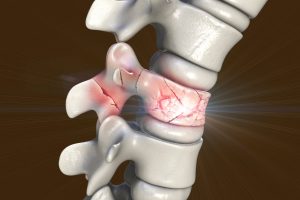
Also called vertebral compression fractures, these injuries can affect both men and women, but are more common for women, especially in older age groups. Spinal compression fractures occur when the vertebrae of the spine collapse because of a condition that have weakened the bones, such as osteoporosis. The area that is the most commonly affected by these fractures is the thoracic area, that is, the middle area of the spine and the fractures can have very severe consequences, such as deformity, loss of height, severe pain and movement difficulties.
Depending on the location and the severity of the fracture, there are several treatment options available – here are some.
Non-Surgical Treatment Options
Providing support for the spine and relieving the pain are two of the most commonly used non-surgical approaches to the treatment of compression fracture.
The medication used include acetaminophen or non-steroidal anti-inflammatory drugs to relieve the pain and muscle relaxants. If the pain is acute and unbearably strong, opioids might be prescribed, but only for a very short period, not longer than 1-2 weeks. If the fracture is caused by a weakening of the bones, the doctor might prescribe some type of bone strengthening medication as well.
To promote the healing of these special types of fractures, doctors often use back bracing. The method involves the usage of external back support to limit the range of motion of the spine and to keep the vertebrae in the correct position during the healing period.
Surgical Treatment Options
If medication and external support do not seem effective or cannot be used, spinal compression fractures are sometimes treated with minimally invasive surgical interventions. Specialists offering spinal fracture treatment near me suggest that you should know some things about the following options:
- Lumbar fusion – this minimally invasive procedure can be used to repair the fracture as well as to correct a deformity. During the procedure, the surgeon joins the bones in the lower back to prevent them from moving. The modern intervention has been developed in the 1990’s and has become very widespread since then, being a great option due to the small incision required and the short healing time;
- Vertebroplasty and kyphoplasty – these two procedures are aimed to reconstruct the vertebral bones that suffer from compression and to strengthen the bones in the spine. They can also restore the alignment of the deformed section of the spine. Both interventions are image-guided procedures, meaning that the movements of the neurosurgeon are continuously monitored through the screen of an X-ray machine. During vertebroplasty, the surgeon introduces a needle into the affected vertebra and injects bone cement to restore the integrity of the bone. Kyphoplasty is also aimed to correct the deformity or the fracture in the spine. This method uses a balloon that is introduced into the vertebrae with the help of a needle and that is inflated when in place. When the bones move into the right position, the balloon is deflated and removed and the cavity left behind is filled with cement the same way as in the case of vertebroplasty.
